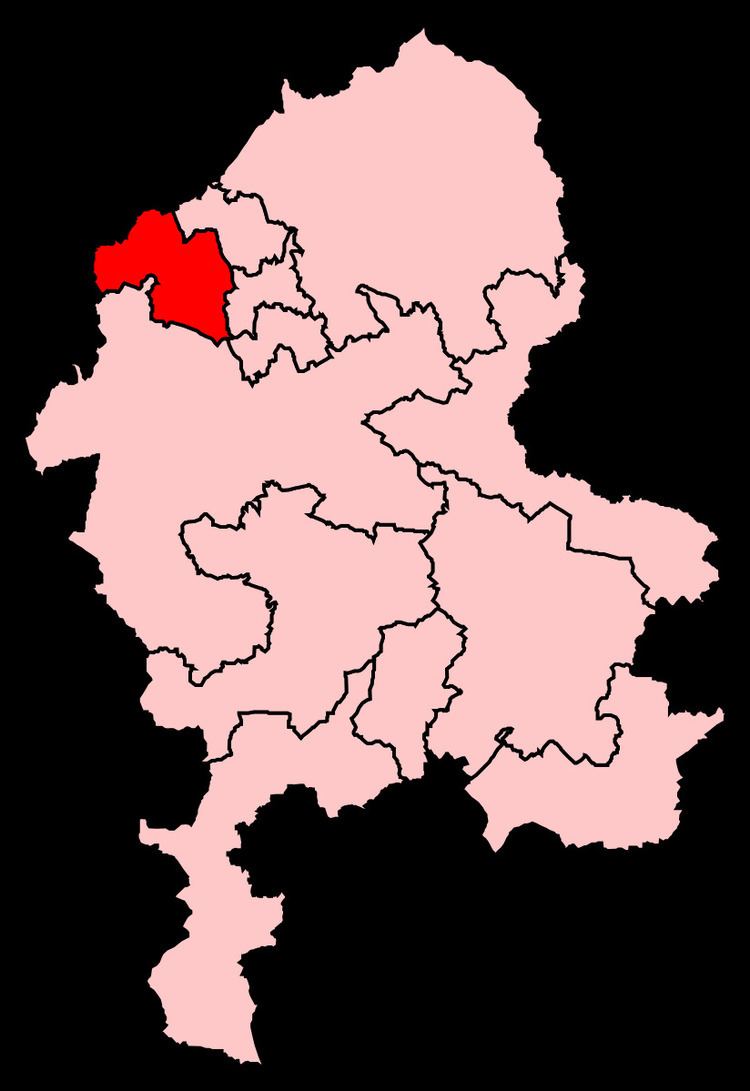Created 1885 Number of members One | Electorate 68,692 (December 2010) | |
 | ||
Major settlements | ||
Newcastle-under-Lyme is a constituency in the Potteries represented in the House of Commons of the UK Parliament since 2001 by Paul Farrelly of the Labour Party.
Contents
History
From its creation in 1354, Newcastle-under-Lyme returned two MPs to the House of Commons. Under the Redistribution of Seats Act 1885, the constituency's representation was cut to one member. Among renowned MPs are two of widespread fame. A Josiah Wedgwood of the pottery family, who was repeatedly reelected to the seat from 1906 until he was ennobled to join the Lords in 1942, as 1st Baron Wedgwood and campaigned in the US for that country to join World War II and for Indian Independence. Before the 20th century the constituency was often influenced and represented by members of the Leveson/Leveson-Gower/Egerton family who owned in this constituency the Trentham estate - their most important MP was the Viscount Trentham who obtained a Dukedom.
Constituency profile
This constituency is one of the most loyal Labour Party seats having returned a Labour MP since 1922 when Josiah Wedgwood, 1st Baron Wedgwood joined the Labour Party. However, at the 2010 General Election it was won by Farrelly with a margin of 3%, the smallest margin in a long time with a Conservative increase of +9.4% and a Labour decline of -7.4%.
Boundaries
The constituency includes most of the northerly parts of Newcastle-under-Lyme borough, primarily Newcastle-under-Lyme town plus Keele and Audley.
Parliament accepted the Boundary Commission's Fifth Periodic Review of Westminster constituencies for General Election 2010 since which it has electoral wards, with no alterations in that review:
From 1983-2010 the constituency comprised the following wards of the Borough of Newcastle-under-Lyme, namely, Audley and Bignall End, Bradwell, Chesterton, Clayton, Cross Heath, Halmerend, Holditch, Keele, May Bank, Porthill, Seabridge, Silverdale, Thistleberry, Town, Westlands and Wolstanton.
MPs 1353–1509
Where the name of the member has not yet been ascertained or is not recorded in a surviving document, the entry unknown is entered in the table.
Burgesses in the English Parliament 1510-1707
As there were sometimes significant gaps between Parliaments held in this period, the dates of first assembly and dissolution are given.
The Roman numerals after some names are those used in The House of Commons 1509-1558 and The House of Commons 1558-1603 to distinguish a member from another politician of the same name.
Elections in the 1980s
Elections in the 1910s
General Election 1914/15:
Another General Election was required to take place before the end of 1915. The political parties had been making preparations for an election to take place and by the July 1914, the following candidates had been selected;
